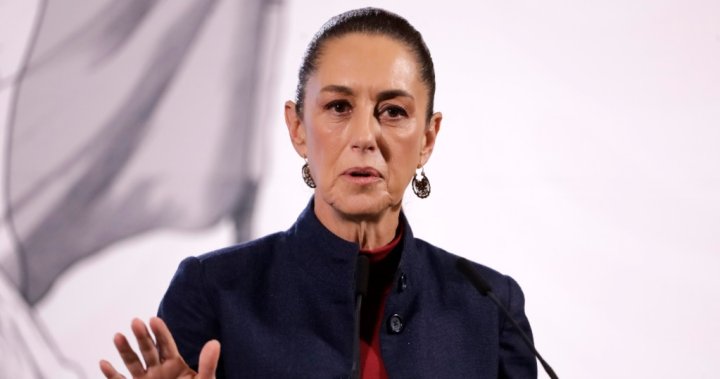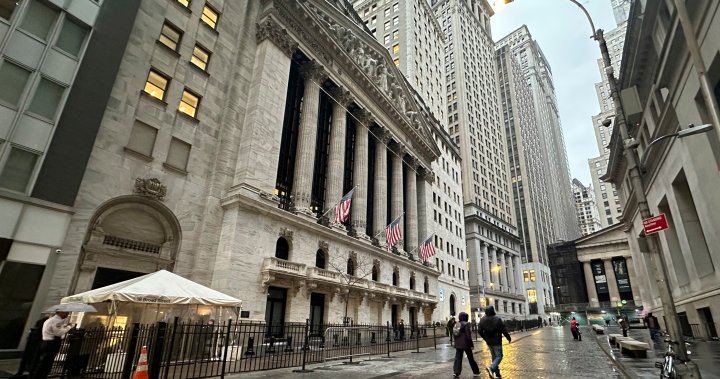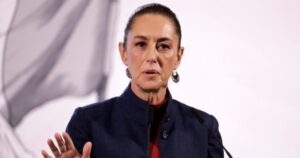US inflation rose last month as gas, egg and used car prices rose, but underlying price pressures also showed signs of easing slightly.
Wednesday’s report from the Labor Department showed the Consumer Price Index rose 2.9% in December from a year ago, the highest level since July, up from 2.7% in November. This is the third consecutive increase after inflation fell to its lowest level in three and a half years at 2.4% in September.
However, excluding volatile food and energy categories, so-called core inflation fell to 3.2%, after being stuck at 3.3% for three months in a row.
The slowdown in core price increases was met with relief on Wall Street, with Dow futures prices rising nearly 700 points after the report was released. Many economists and investors are concerned that inflation is running higher than the Fed’s 2% target, after a steady decline in prices in 2023 and through most of last year.
Story continues below ad
These concerns have led to higher interest rates on Treasury securities, which has also led to higher borrowing costs for mortgages, cars, and credit cards, even as the Federal Reserve lowers its key interest rate.
However, the increase in overall consumer prices underscores that inflation remains challenging, even with the threat of potentially inflationary policies from the Trump administration, such as global tariffs and mass deportations of unauthorized immigrants.
Egg prices rose last month, but not as much as many economists feared, rising by just 3.2% in December. An outbreak of bird flu wipes out many chicken flocks, reducing egg supplies. The report said that gas prices rose by 4.4%.
The national average price for a gallon of gasoline on Wednesday was $3.09, up 7 cents from last month, but only 2 cents higher than a year ago at this time.

Weak Canadian dollar fuels food inflation
On a monthly basis, consumer prices rose 0.4% in December, the largest increase since last March. Core prices rose just 0.2%, after four straight months of 0.3% increases, a positive sign that some price pressures may be easing a bit.
Story continues below ad
Last Friday’s unexpectedly strong jobs report sent stock and bond prices lower amid concerns that a healthy economy could keep inflation high, preventing the Fed from cutting further.

Get daily national news
Get the day’s top political, economic and current affairs news, headlines, delivered to your inbox once a day.
On Tuesday, Trump said he would create a “Foreign Revenue Service” to collect tariffs, suggesting he expects to eventually impose many tariffs, even as he also said he intends to use them as a bargaining chip. During the election campaign, he promised to impose tariffs of up to 20% on all imports and tariffs of up to 60% on goods coming from China.
Last week, minutes from the Fed’s December meeting showed that economists at the central bank expect inflation to remain about the same this year as in 2024, pushed slightly by higher tariffs.
Trending now
-
![]()
Los Angeles wildfires: FBI searches for pilot of drone that hit Canadian water bomber
-
![]()
First carbon rebates scheduled to roll out in 2025. What Canadians can expect
Federal Reserve Chairman Jerome Powell said the central bank will keep its key interest rate high until inflation returns to 2%. As a result, Wall Street investors expect the Fed to cut its key interest rate just once this year, from its current level of 4.3%, according to futures prices.
Other borrowing costs remain high, partly due to expectations of higher inflation and fewer cuts in federal interest rates. Mortgage rates, which are heavily influenced by the yield on the 10-year Treasury note, rose for the fourth time in a row last week to 6.9%, well above pandemic-era lows of less than 3%.
With the labor market resilient – the unemployment rate fell to a low of 4.1% last month – consumers are able to continue spending and drive growth. However, if demand exceeds what businesses can produce, this could lead to increased inflation.
Story continues below ad
Earlier this month, several prominent economists, including former Fed Chairman Ben Bernanke, agreed that Trump’s eventual tariffs would have only minor effects on inflation. The issue was discussed at the annual meeting of the American Economic Association in San Francisco.
Jason Furman, a top economic adviser during the Obama administration, said at the conference that the tariffs could raise the annual inflation rate by just several tenths of a percentage point. But he added that even an increase of this size could be enough to influence the Fed’s interest rate decisions.
“You’re in a world where Trump’s policies are more like tenths, rather than something catastrophic,” he said on January 4. “But I think we’re also in a world where the trend is whether interest rates stay the same or go down.” , or going up, depends on those tenths.

Trump’s tariff threat: Energy sector braces for multibillion-dollar impact
& Edition 2025 The Canadian Press



















